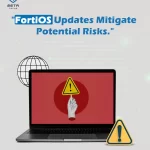This article delves into the specifics of CVE-2024-4985 in GitHub Enterprise Server, exploring why urgent action is essential to mitigate its effects and offers a detailed examination of the vulnerability, including the exploit mechanisms, proof-of-concept, vulnerability scoring, and CVSS score, providing an overview of why CVE-2024-4985 is a significant concern.

What is CVE-2024-4985 in GitHub Enterprise Server?
CVE-2024-4985 in GitHub Enterprise Server is a critical authentication bypass vulnerability identified within the platform, specifically designed for organizational use. This self-hosted version of GitHub, known for its collaborative development capabilities, was found to have a vulnerability with a maximum Common Vulnerability Scoring System (CVSS) score of 10.0. This score reflects the highest level of severity due to its potential impact on security.
The Role of Encrypted Assertions
Encrypted assertions are intended to enhance the security of a GHES instance when utilizing SAML SSO. By encrypting the messages sent by the SAML identity provider (IdP) during the authentication process, it aims to provide an additional layer of security. However, CVE-2024-4985 demonstrates how such features can also introduce vulnerabilities if not implemented correctly.
Learn More About: Palo Alto Vulnerability cve 2024 3400 Discovery
CVE-2024-4985’s Broader Impact
- Affected Servers: The vulnerability primarily impacts servers utilizing SAML SSO authentication with the optional encrypted assertions feature. It’s noteworthy that the encrypted assertions are not enabled by default, limiting the vulnerability’s reach to a subset of GHES instances.
- Access Without Authentication: CVE-2024-4985 allows attackers to access the vulnerable server without prior authentication, posing a significant risk to organizational security.
- Resolution and Patching: GitHub responded to CVE-2024-4985 by releasing updated versions of GitHub Enterprise Server (versions 3.9.15, 3.10.12, 3.11.10, and 3.12.4) to address and patch the vulnerability. These updates are crucial for mitigating the risk posed by CVE-2024-4985.
How Does CVE-2024-4985 Impact GHES?
CVE-2024-4985 impacts all versions of GitHub Enterprise Server prior to version 3.13.0. The critical nature of this vulnerability prompted GitHub to release updates for older versions, specifically versions 3.9.15, 3.10.12, 3.11.10, and 3.12.4, which address and mitigate the vulnerability. It is crucial for organizations using GHES to apply these updates to prevent potential exploits.
Potential Exploitation Scenarios
- Impersonation of Administrative Users: Attackers exploiting CVE-2024-4985 can forge SAML responses to impersonate legitimate users, including those with administrative privileges. This allows unauthorized access to sensitive areas of the GHES, potentially leading to further exploitation of the system.
- Theft of Sensitive Data: Given the access that can be gained through this vulnerability, there is a high risk of theft of sensitive source code and confidential data. Such breaches can have long-term detrimental effects on an organization’s integrity and competitive standing.
- Disruption to Development Operations: The exploitation of CVE-2024-4985 can lead to major disruptions in development operations. Unauthorized access and potential modification of the development environment can halt production, cause data loss, or lead to the deployment of malicious software within an organization’s products.
- Broad Attack Surface: A search using ZoomEye identified over 76,000 potentially exposed GHES instances, predominantly in the United States, Japan, and Ireland. This highlights the extensive potential attack surface and underscores the importance of securing GHES instances against CVE-2024-4985.
Why Updating GHES is Essential
Updating GitHub Enterprise Server (GHES) is a critical process that ensures the security, functionality, and efficiency of the software development infrastructure within an organization. The discovery of CVE-2024-4985 in GitHub Enterprise Server, a severe security vulnerability, underscores the importance of keeping GHES up to date to protect against potential security threats. This section explores the benefits of staying updated and the consequences of ignoring updates, emphasizing the necessity of regular maintenance and upgrades.
Consequences of Ignoring Updates
- Increased Vulnerability to Attacks: Failure to update GHES exposes organizations to known vulnerabilities, such as CVE-2024-4985 in GitHub Enterprise Server, making them easy targets for cyberattacks. Exploitation of these vulnerabilities can lead to unauthorized access, data theft, and severe security breaches.
- Missed Opportunities for Improvement: By not updating, organizations miss out on new features and enhancements that could improve their development processes. This can result in decreased efficiency and productivity, putting them at a competitive disadvantage.
- System Instability: Ignoring updates can lead to system instability and frequent crashes, disrupting development operations and causing significant delays in project timelines.
- Non-compliance Risks: For organizations in regulated industries, failing to update GHES can result in non-compliance with security standards, leading to legal issues and financial penalties.
Importance of Staying Updated by Meta Techs services
staying ahead of threats is not just a necessity but a strategic imperative for the sustainability and success of any business. Meta Techs, a pioneer in cybersecurity services in Dubai, emphasizes the importance of keeping digital environments up to date with the latest security measures and technologies. This approach is crucial in safeguarding against the evolving landscape of cyber threats, including vulnerabilities like CVE-2024-4985 in GitHub Enterprise Server.
Best Practices for Version Management
- Incremental Changes: Making small, incremental changes allows for easier tracking and management of updates. This practice is vital in version control, ensuring that each commit is focused and manageable.
- Single Task Commits: Committing code that accomplishes only one task or fix at a time ensures clarity and reduces the risk of introducing errors. This also makes it easier to revert changes if necessary.
- Utilizing Branching: Branching enables the separation of development efforts, ensuring that new functionalities are fully tested before being merged into the main codebase. This separation is crucial for maintaining the stability of production environments.
- Clear Commit Messages: Writing clear and descriptive commit messages helps in understanding the purpose and impact of each change. This is essential for effective collaboration and future reference.
- Consistent Branching Strategy: Adopting a consistent branching strategy across projects helps in streamlining version management processes. It ensures that team members are aligned and can efficiently collaborate on development efforts.
Meta Techs protect your company from Threats
Meta Techs offers a suite of cybersecurity solutions that are tailored to protect businesses from a wide array of cyber threats. Their services include:
- Advanced Cybersecurity Solutions: Utilizing the latest technologies and strategies, Meta Techs provides robust protection for data and systems, ensuring businesses can operate with confidence in a world full of cyber threats.
- Cybersecurity Awareness and Training: Enhancing cybersecurity awareness and providing specialized training to improve team skills in identifying and dealing with cyber threats is a critical component of Meta Techs’ offerings.
- Vulnerability Assessment: Through exploration and careful assessment of cybersecurity vulnerabilities, Meta Techs enables businesses to protect their operations with confidence.
- Cloud and Infrastructure Security: Meta Techs secures data and applications in the cloud with the highest levels of security and protection, using customized solutions to ensure the safety of cloud environments.
By staying updated with the latest developments in cybersecurity through Meta Techs, businesses can protect their IT infrastructure from cyber threats and hacks, maintaining the integrity of their data and preserving their reputation.







